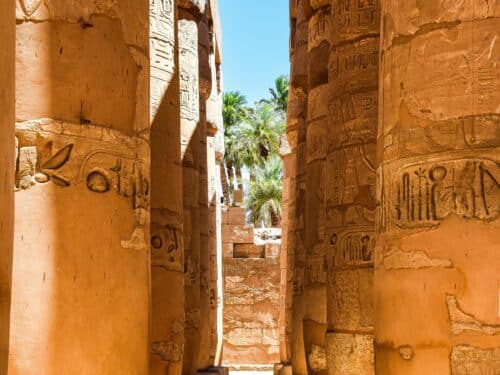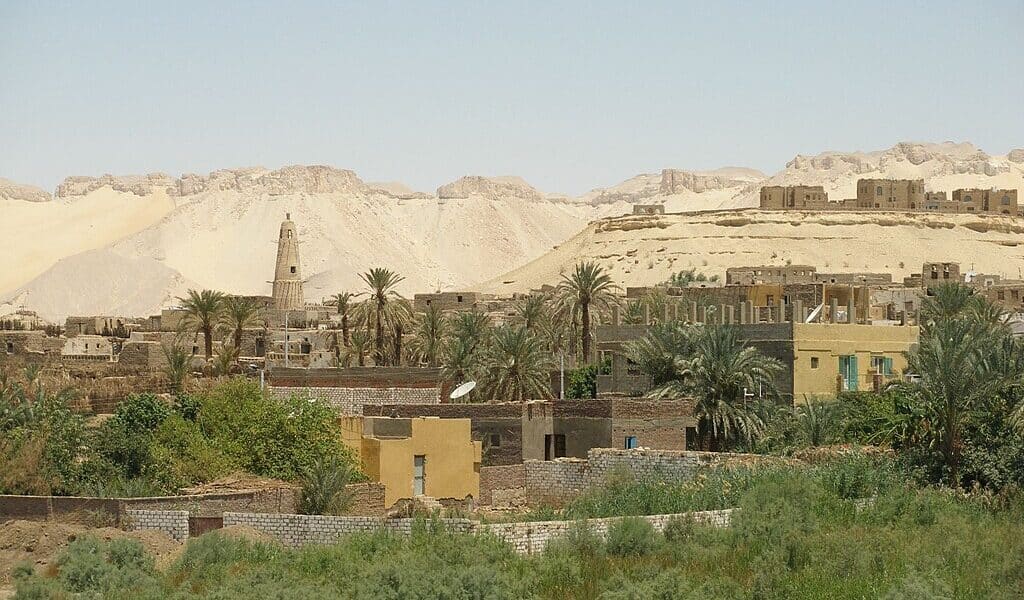

Journey to Dakhla Oasis, the ultimate cultural immersion in Egypt’s Western Desert. Explore the Islamic fortified village of Al-Qasr, ancient Roman ruins, and stunning desert landscapes. Plan your deep cultural tour with My Egypt Travel.
🌾 Dakhla: The Jewel of the Western Desert
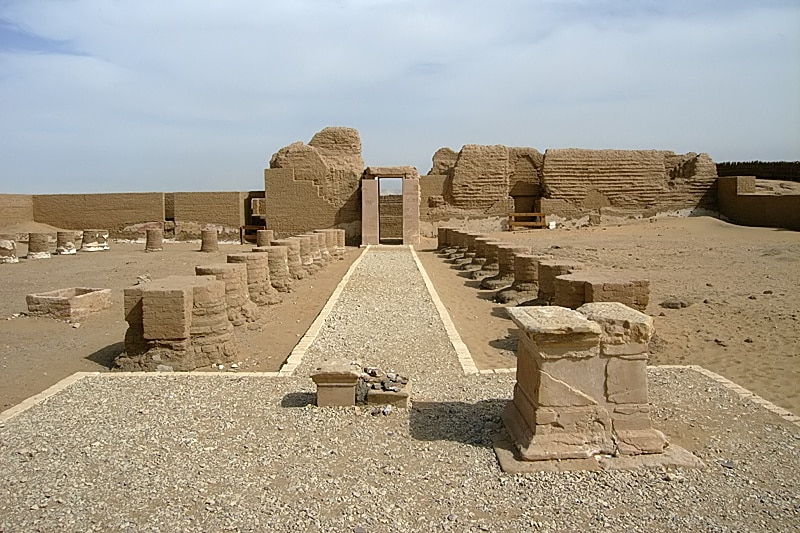
Dakhla Oasis stands out among the Egyptian oases for its sheer size, abundant fresh water, and the incredible preservation of its layered history. Located deep within the Western Desert, Dakhla is not just a fertile green spot; it is a repository of cultures, displaying remnants that span from the Neolithic era, through Roman and Pharaonic times, right up to the medieval Islamic period.
For the American and European traveler seeking authentic, multi-layered cultural experiences beyond the Nile, Dakhla offers an unparalleled journey into the history of desert life. This non-conventional guide, brought to you by My Egypt Travel, explores Dakhla as a living historical document—a testament to human ingenuity and resilience in the face of the arid Sahara.
The Contrast of Time: A Non-Conventional Perspective
Dakhla’s uniqueness lies in the direct contrast between the lush, cultivated inner oasis and the stark, ancient desert fortresses. Here, you can walk through the intricate, narrow alleys of a fully preserved Islamic village and, within minutes, stand before a Roman temple. Our itineraries focus on this fascinating juxtaposition, highlighting the historical continuity of the oasis dwellers.
I. Al-Qasr: The Medieval Masterpiece
The heart of Dakhla’s cultural appeal is the Islamic fortified village of Al-Qasr, a site that transports visitors directly back to the Mamluk and Ottoman eras.
1. The Fortified Town of Al-Qasr (The Living Museum)
Built atop Pharaonic ruins, Al-Qasr is arguably the most intact example of a traditional Islamic mud-brick town in Egypt. Its dense, labyrinthine streets, covered walkways, and towering minaret were designed for defense against desert raiders.
- Unique Feature: Many of the houses still feature carved wooden door lintels, some dating back nearly a thousand years, bearing inscriptions and dates that detail the history of the families who built them.
- Cultural Insight: The design of the town—with houses supporting each other and covered streets providing shade—is a perfect example of sustainable desert architecture and urban planning.
2. The Mamluk-era Mosque and Ethnographic Center
The Mosque of Al-Qasr and the nearby old court and school offer a glimpse into the Mamluk-era governance and religious life. The local museum often displays tools and artifacts that detail the oasis’s unique traditions.
II. The Roman Legacy: Temples and Necropolis
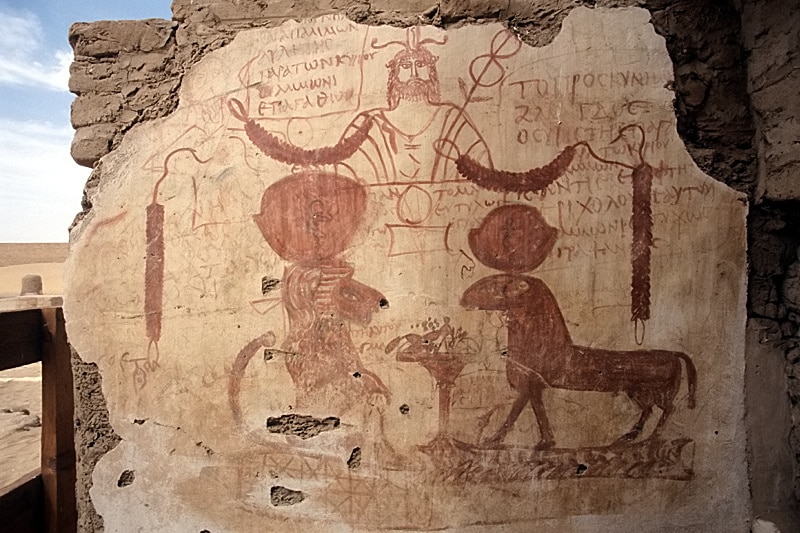
Dakhla served as a crucial strategic and agricultural hub during the Roman and Ptolemaic periods, evidenced by well-preserved temples dedicated to local and Egyptian gods.
3. Deir El-Hagar (The Monastery of Stone)
This beautifully preserved Roman temple, located on the northern edge of the oasis, was dedicated to the Theban Triad (Amun, Mut, Khonsu) and the local god Seth.
- Artistic Feature: The temple is notable for its exquisite colored reliefs that remain vivid, illustrating a fascinating blend of classical Roman architectural elements with traditional Egyptian iconography.
4. The Necropolis of Muzawaka
This site contains several Roman-era rock-cut tombs, including two famous ones known for their vivid, almost cartoon-like wall paintings.
- Non-Conventional Art: The paintings often feature Roman adaptations of Egyptian deities and funerary rituals, providing a unique visual record of the religious synthesis that occurred during the Roman occupation.
III. The Pharaonic Roots: The Oldest Evidence
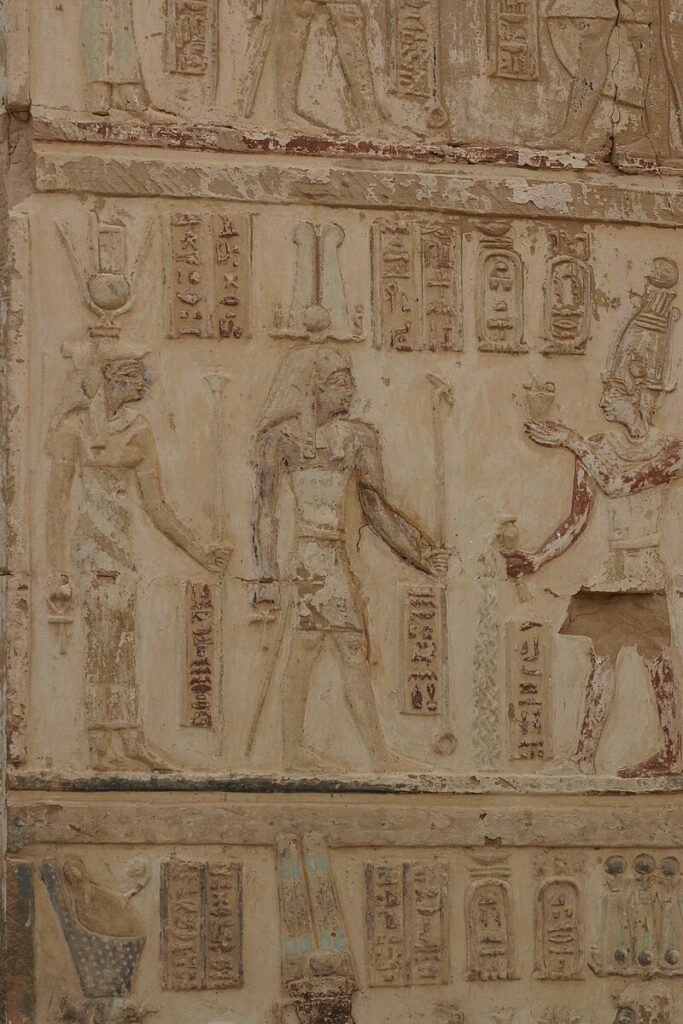
Dakhla’s history stretches back deep into the Pharaonic and pre-dynastic periods, confirming its role as one of the most continuously inhabited spots in the entire Sahara.
5. The Temple of Mut Al-Kharab
This site, named after the ruins of the temple dedicated to the goddess Mut, marks the location of the ancient capital of Dakhla Oasis. Ongoing excavations reveal fascinating layers of Pharaonic and later history.
6. Amheida (The Roman Town)
The ruins of Amheida represent a large Roman civilian settlement. Unlike the temples, this site offers a look at domestic life, including well-preserved houses and the remnants of a local bathhouse, providing a complete picture of Roman habitation.
IV. The Natural Beauty and Serenity
Beyond the archaeology, Dakhla is famous for its natural beauty—its date palms, its olive groves, and its healing waters.
7. Therapeutic Hot Springs
Dakhla is particularly famous for its sulfur hot springs, such as Bir Talata, which are believed to have therapeutic properties.
- Relaxation Focus: Soaking in the warm springs is the perfect relaxing conclusion to a day of exploring dusty ruins, appealing directly to the traveler seeking wellness and escape.
8. The Dune Seas and Palm Groves
The edges of the Dakhla depression are marked by stunning sand dunes and vast palm groves, offering breathtaking views and opportunities for peaceful walks or photography.
V. Planning Your Cultural Deep Dive with My Egypt Travel
A trip to Dakhla requires dedicated time and specialized logistics due to its remote location. It is usually part of a comprehensive Western Desert Circuit.
The Multi-Day Immersion
- Authenticity Focus: We prioritize accommodation in small, local heritage lodges that emphasize sustainable tourism and genuine interaction with the oasis community, providing a higher quality cultural experience than large hotels.
- The Cultural Guides: Our specialized desert guides not only know the logistics of the 4×4 safaris but also possess deep knowledge of the local cultural and architectural history, bringing the medieval and Roman ruins to life.
Connecting the Circuit
My Egypt Travel structures the tour to seamlessly connect Dakhla with the other major oases (Kharga, Farafra, and Bahariya), ensuring an uninterrupted flow of adventure and historical discovery, turning a remote destination into an accessible, rewarding adventure.
🔑 Conclusion: The Timeless Layers of Dakhla
Dakhla Oasis is a powerful destination that rewards the patient and curious traveler. It is a living, working oasis that tells the history of Egypt through its mud-brick mosques, Roman temples, and sun-drenched necropolises. It offers a rare window into the resilience of desert civilization and an unparalleled opportunity for cultural immersion.
Ready to walk the medieval streets of Al-Qasr and uncover the Roman secrets beneath the sands? Let My Egypt Travel guide your profound cultural journey to the Dakhla Oasis.

